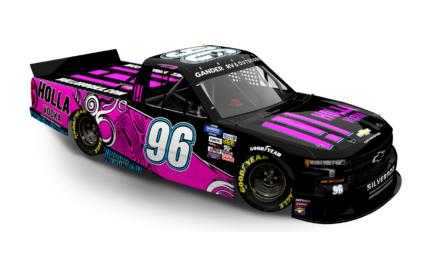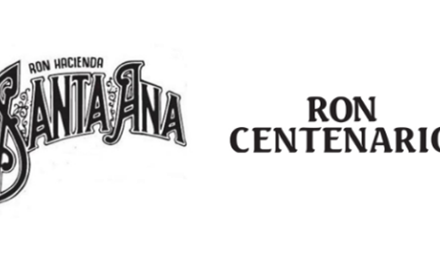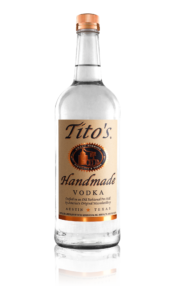 While whiskey gets most of the buzz these days, vodka pays the bills.
While whiskey gets most of the buzz these days, vodka pays the bills.
Especially among cocktail geeks, the attitude toward what’s been called “the tofu of spirits” can be mixed, but smart operators and retailers know the value of vodka. The average Americans’ love for the fairly neutral spirit is unalloyed: According to trade association Distilled Spirits Council’s (DSC) annual report on sales, vodka continued to grow in 2017 by just over 2 percent, to 71.3 million 9-liter cases. That’s about one-third of all spirits sold in the country, the largest category by far.
But there are numerous currents in that ocean of vodka, with flavors and imported super-premium brands both struggling to stay afloat (DSC defines super-premiums as those at the highest price point, a group that includes Grey Goose, Belvedere, and Ciroc, which retail for around $30 per 750 ml bottle).
Meanwhile, American vodkas are growing at a rate that surpasses imports, and some of the hottest brands are made here; now atop the list of best selling American-made spirits: Tito’s Handmade Vodka.

“Consumers are looking for brands with an authentic story that they can identify with.” —Troy Gorczyca, Pernod Ricard USA
Emphasize location
A number of factors play into the new-found consumer love of American spirits, including the burgeoning small distiller industry; the locavore, “farm to glass” trend and its attendant interest among consumers, especially millennials, in provenance, stories, and ingredients; and an understanding that great value can be had from domestic distillers at reasonable prices.
For smaller brands, that vodka evolution poses both opportunities and challenges. Most important is finding a way to differentiate themselves in a highly competitive market when the trade is loathe to take on yet another vodka.
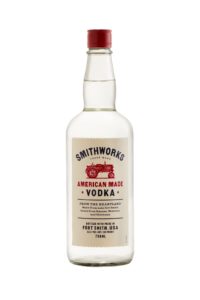 “It’s a very, very crowded marketplace,” says Troy Gorczyca, brand director of Pernod Ricard USA’s Smithworks vodka. “We have some big brands in the vodka space, but we also saw the opportunity in the ‘American made’ space.”
“It’s a very, very crowded marketplace,” says Troy Gorczyca, brand director of Pernod Ricard USA’s Smithworks vodka. “We have some big brands in the vodka space, but we also saw the opportunity in the ‘American made’ space.”
In 2016, PRUSA launched Smithworks in five states as a heartland brand in partnership with country music star Blake Shelton. Made with corn from Missouri, Kansas, and Oklahoma; bottled in Ft. Smith, Arkansas; and with imagery including a tractor on the label and merchandising, the brand is now sold in 13 states with more to come.
“We wanted to call out very clearly that Smithworks vodka is American made, identifying the states where the corn and water are from on the label, and symbolizing the hardworking values of the dedicated team in Ft. Smith through the tractor as well,” he says. “Consumers are looking for brands with an authentic story they can identify with. It’s a very crowded category, so we needed to find a way to get our message out there.”

“There are many opportunities in the vodka space to carve out a unique identity.” —Scott Meek, Prairie Organic Vodka
Tell your story
Other producers are equally enthused about American vodka’s prospects. “There are many opportunities in the vodka space to carve out a unique identity, to build a brand that has a place and can meet the different needs of today’s consumers,” says Scott Meek, vice president of marketing for 106-year-old Phillips Distilling Co., which includes UV Vodka and Prairie Organic Spirits, among others in its portfolio.
It’s tougher for small producers without a major supplier’s brand-building largess and a TV and country music star on board.
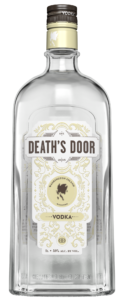 “Frankly, as an independent craft producer, we have a difficult time with messaging on the larger scale,” says Margaret Ebeling, marketing director for Death’s Door Spirits in Middleton, Wis. “Vodka is a very competitive category and a lot of dollars go into marketing. The large vodka producers have a megaphone, which makes it difficult for someone like us to be heard.”
“Frankly, as an independent craft producer, we have a difficult time with messaging on the larger scale,” says Margaret Ebeling, marketing director for Death’s Door Spirits in Middleton, Wis. “Vodka is a very competitive category and a lot of dollars go into marketing. The large vodka producers have a megaphone, which makes it difficult for someone like us to be heard.”
Death’s Door worked on establishing its points of difference not only as a small and independent distiller but also through specifics about how its vodka, made with three grains—winter wheat, malted barley and corn—offers different flavor characteristics. It also has an appealing local story: The distiller has, since starting in 2005, bought all the wheat produced on the island that helped create its name (“Death’s Door” is a treacherous passage between Washington Island and mainland Wisconsin).

“The large vodka producers have a megaphone, which makes it difficult for someone like us to be heard.” —Margaret Ebeling, Death’s Door Spirits
But Death’s Door, now an international brand, also got a major boost a few years ago from an investor, Puerto Rico’s Destilería Serrallés (maker of Don Q rum), with a distribution agreement that included a national sales team. This opened doors other small brands couldn’t. Getting distributors to take on one’s wares is one thing; having a sales team on the streets making calls is something else altogether.
“That’s a huge advantage for us,” says Ebeling. “It let us jump into the national scene with a sales team of a couple dozen people to negotiate deals with distributors nationally and state-by-state. It catapulted us into a national position.” Going national gives brands access to national account buyers—crucial to entry into the chain restaurant business.
Establish a consumer connection

“There’s a lot of great vodka out there, and we’re thankful for those that have chosen Tito’s.” —Frank Polley, Tito’s Handmade Vodka
At one time, Tito’s was also a small brand without many boosters. But word of mouth, a few glowing reviews, the well packaged story of Tito Beveridge, and some hard to replicate kismet launched the Texas-based brand into the stratosphere.
“There’s a lot of great vodka out there—a lot to choose from—and we’re thankful for those that have chosen Tito’s,” says Frank Polley, vice president of trade marketing for Tito’s Handmade Vodka. “We’ve seen prices change and flavors come and go, but we know that people stick with brands they trust and that treat them right.”
These days, Tito’s plays at an entirely different level than emerging brands. “We look at what’s happening with competition, but we don’t spend a lot of time worrying about it. We make one product and we do our best to make it well,” he says.

“Our strategy was to build a successful Pacific Northwest brand using local ingredients to get attention in that crowded market.” —Ken Wyatt, 44° North
The connection Tito’s made with customers is the sort other producers envy. As a producer of both a potato and a wheat vodka, Ken Wyatt, co-founder of Boise, Idaho’s 44° North knows that consumer reaction is crucial. Now available in about 40 states, 44° North started in 2005 with the Idaho potato at its core.
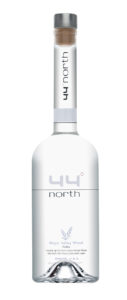
“When we started out, we were looking for an American response to the great European import products. Our strategy was to build a successful Pacific Northwest brand using local ingredients to get attention in that crowded market,” says Wyatt. “Potato vodka has definitely been a differentiator.”
Traditionally, vodkas have been categorized into three groups: the clean, light Scandinavian style; the oily and flavorful Polish style; and the smooth but pungent Russian style. But in the United States, source material has become the standard, with wheat vodkas the most neutral; corn vodkas generally sweet; potato vodkas creamy; and rye vodkas spicy.
While 44° North produces a local wheat vodka as well, it’s the potato story that resonates. “I tell people to taste both, because there’s a significant difference between them even though they’re made in the same place and same still,” says Wyatt. “Our wheat vodka is really smooth, while the potato has a creaminess and a different mouthfeel that makes it stand out.”
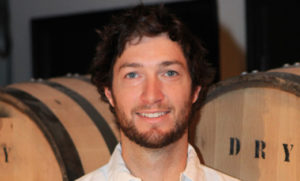
“When we went to market 10 years ago, the vodka market was saturated, but not with craft product. We thought we were offering something unique.” —Patrick Donovan, Dry Fly Distilling
Build your market
44° North’s marketing strategy—build through local and regional markets as a brand with an identity based on source material—has been similar to that of Dry Fly Distilling, in Spokane, Wash., although the latter got an added boost when its Dry Fly Washington Wheat Vodka took Double Gold and Best Vodka at the 2009 San Francisco World Spirits Competition. Awards can definitely help open doors as a selling point with retailers and consumers, says Patrick Donovan, director of operations for Dry Fly. (For more on this, see “And the Winner Is…,” page 40.)
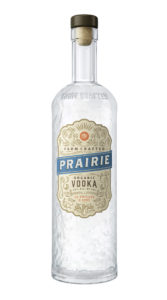 “The vodka was our first product and winning the award put us on the map,” he says. “We were about a year-and-a-half old, and that felt like it validated our stance on vodka.
“The vodka was our first product and winning the award put us on the map,” he says. “We were about a year-and-a-half old, and that felt like it validated our stance on vodka.
“When we went to market 10 years ago, the vodka market was saturated, but not with craft product. We thought we were offering something unique, with a flavor profile that was a sharp contrast to what was out there, and the award definitely helped get people interested.”
Most small American vodka producers focus on off-premise sales opportunities, because on-premise sales are more labor-intensive, but 44° North has found benefits in developing bars and restaurants as customers. “We’ve seen a few markets where that pays dividends later in retail,” Wyatt says.

“When we speak to retailers or distributors, I can tell them the names of our farmers and their stories.” —John Carrabus, One Eight Distillery
When working the market, Meek says, Prairie Organic also leads with its source material: organic corn, grown in its parent company’s home state of Minnesota by a select group of known farmers. Launching as an organic spirit when few others were available was key, he adds. “But, then as now, we always start by saying it’s a great tasting product, gluten free, made with 100 percent USDA-certified organic corn. We tell consumers a lot about where the product comes from, because it’s the source of ingredients that makes us unique.”
Of course, packaging, merchandising support, marketing spend, and even social media popularity can all play a role in establishing and then building a brand. Some brands, though, opt—at least at the start—for a hyper-local market.
Washington, D.C.’s four-year-old One Eight Distillery sells spirits, including District Made vodka, only in D.C. and Maryland. Made with Virginia rye, malted rye from North Carolina, and Maryland corn, its vodka connects to the Mid-Atlantic heart of early American farming.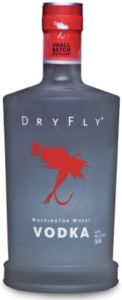
“When we speak to retailers or distributors, I can tell them the names of our farmers and their stories,” says Director of Sales John Carrabus, echoing a point other small producers make about provenance. “Millennial consumers are really interested in that sort of story. It resonates with them, as does the history of this style of vodka and what rye has historically meant to the region.”
Stay the course
Many small distillers start with a vodka release because their whiskey needs time to age before it can be sold. Its quick turnover makes vodka an important spirit, one that can be sold almost immediately, bringing much-needed income. That immediacy has attracted many more to the product space, so each year, the bottle battle gets tougher.
Anyone entering the vodka market today might benefit from the advice Donovan of Dry Fly gives to the aspiring distillers he trains: “One of the first things I tell them is to get on the phone and try to sell a vodka to a distributor. I want them to know what they’re up against.”



